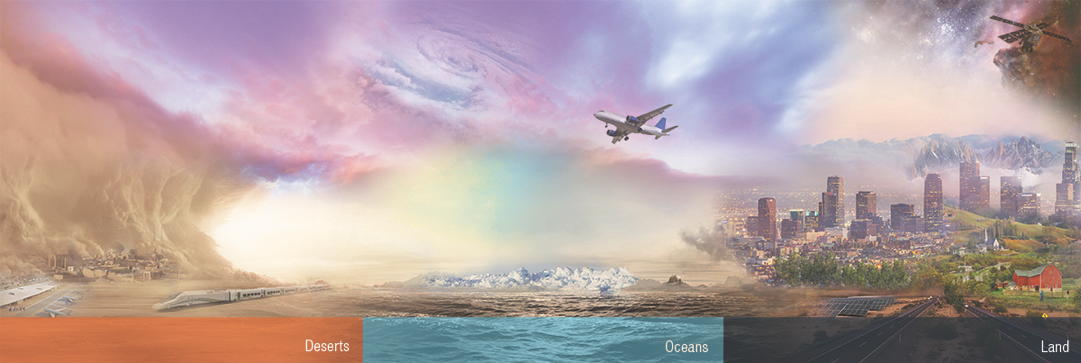The Dust cycle and its associated impacts
Atmospheric dust consists of tiny mineral particles, originating from soils in the arid and semi-arid parts of the Earth. When lifted by the wind, dust can be transported over distances of many thousands of kilometres to be finally deposited on the land, vegetation and glaciers, or into the ocean. The Intergovernmental Panel on Climate Change (IPCC) recognizes dust as a major component of atmospheric aerosols, one of the essential climate variables that characterize the Earth’s climate. Dust particles are increasingly considered by atmospheric researchers to have important effects on weather, as they are involved in feedback processes related with atmospheric dynamics, clouds and precipitation formation.
Dust is gaining visibility because of its direct impacts on society and the economy. Airborne dust can carry irritating spores, bacteria, viruses and persistent organic pollutants. In areas located in or downwind of arid regions, sand and dust storms present serious risks to human health, the environment and infrastructure. Impacts on health include respiratory and cardiovascular problems, eye infections, and increased risk of infectious diseases in some regions, such as meningitis in Sahel and valley fever in Arizona. Dust can also transport nutrients to other parts of the world like the oceans, where it can affect marine biomass production. Other impacts include negative effects on ground transport, aviation, agriculture and the generation of solar energy.

The Barcelona Dust Regional Center has centered its activities on providing access to timely dust information and raising awareness of the effects of dust on society, which is key for impact mitigation. On one side, the Center promotes research on the development and improvement of modeling capabilities that can help enhance our knowledge of the dust interactions within the Earth System, as well as the predictions of sand and dust storms. In this direction, the use of multi-model ensembles to create probabilistic forecasts or research in data assimilation can help improve our short- and medium-range forecasting and long-range prediction capabilities. Satellite products and the implementation of stable ground-based networks are indispensable sources of information that can be used to track sand and dust events in near-real-time, but also to support modeling developments through evaluation or data assimilation. On the other side, the Center supports the participation of user communities, which is fundamental for the development and establishment of dust-derived services that can ultimately serve for the mitigation of sand and dust storms. The Center also focuses its activities on promoting capacity building (facilitating access to the available information), technology transfer (developing tailored products for users), dissemination and public engagement.
Core Projects
The projects and initiatives listed here are directly supporting the WMO Barcelona Dust Regional Center products and activities.
